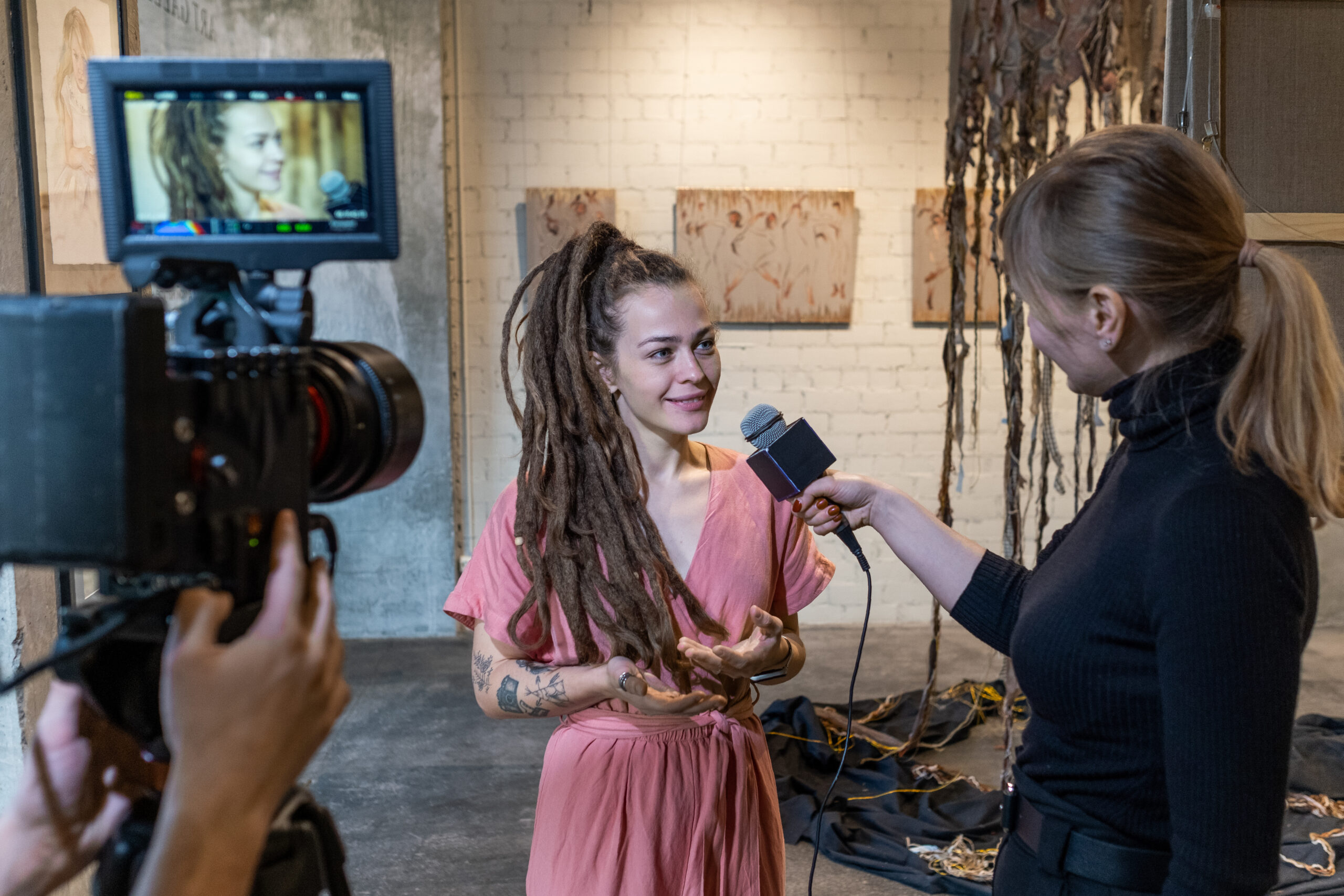Artists benefit from media attention because it could lead to more commissions or increase the value of their existing works. Any time artists engage with their communities could be an opportunity to send out a press release.
Media coverage helps an artist build name recognition. An artist that people have heard of receives more respect than an unknown artist.
An artist may also have a desire to promote the arts and foster greater appreciation for them among the public. The intended message or meaning of the art may be just as important to the artist as establishing a name.
Quality topics for an artist press release include a gallery exhibition, teaching a class, or being commissioned to produce something for public display at a city hall or library. A piece earning a high price at an auction could be newsworthy as well.
Unique qualities could work for a press release, such as working with rare materials or preserving traditional art practices. An artist might be trying to raise the profile of a social issue through art exhibits.
If you have a gallery show or class coming up, the press release should go out one to four weeks before the event. This gives the media time to notice and work the information into its publication deadlines.
Media professionals will appreciate if you follow press release best practices. Keep the press release short, ideally no more than 500 words.
Press releases need to deliver essential facts quickly. An editor should be able to scan one and determine what it’s about with little effort.
As an artist, your story will be highly visual in nature. Be sure to explain in the press release where high-resolution photographs of the artwork can be downloaded.
What Should A Press Release For An Artist Say?
A press release for an artist uses a newsworthy event as the basis to tell a story. This is called the hook that makes people want to read your story.
Establish what your hook will be first because it guides how you write the entire release. For an artist, the hook is likely to be something unique about the artist, the art, or the relationship between the artist and the community.
Examples of hooks or newsworthy events for an artist are opening a studio, working with an art therapy program for traumatized people, or being associated with a trend. A trend could be that people are commissioning mosaics or sculptures for their luxury homes and this local artist is part of that trend.
A painter being shown at a prestigious gallery represents a good story as well. The hook could be that the artist is finally achieving recognition and success. For metal artists, the hook might be how much an artist has to invest in materials and equipment just to create sculptures.
Your goal is to highlight what makes the artist unique. Bring attention to the characteristics of the artwork that resonate with people.
Beyond the hook, your story will say pertinent details that explain where the artist works, when an exhibit is happening, or where the art can be seen. Work in information about the artist’s background, training, and inspirations.
Include some short statements that explain why the artist feels drawn to create and use a chosen medium. People like to know what is motivating an artist, and an explanation of why the artist has chosen this path helps to make the press release intriguing.
An artist’s motivations may be complex but avoid giving a long-winded explanation. The press release needs to stay short but should direct readers to where they can get more information about the artist’s life. This may even lead to a journalist or influencer conducting an interview.
Finally, decide on the tone of the press release. Some artists deal with very serious subject matter, such as war or social criticism, whereas other artists focus on pleasure and whimsy.
Creating A Press Release For An Artist
Assemble your visual materials, like pictures and videos, to include with your press release or make available as supplemental resources. If your news involves a third party, like a gallery or charity, prepare a short statement about that entity that summarizes its function and philosophy.
Your press release is expected to supply answers to standard W-questions, who, what, where, when, and why. List the facts that answer each question and make sure to include them. You may also want to include facts about where the artist’s materials come from or how much is used to create a single piece.
The structure of the press release starts with a headline and summary followed by the body of the announcement. At the end, place media contact information and a boilerplate statement about the artist’s biography or studio.
The angle of your story that you chose as its most interesting aspect will be the subject of the headline, summary, and first paragraph. The goal for the headline is to look intriguing and accurately describe what the press release is about.
Keep the summary short at about one to three sentences. Add a fact that supplements the mission of the headline and pulls readers into the story.
The body of the press release should start with the primary news announcement and then add in extra details. The formula calls for presenting the biggest detail first followed by smaller details.
Use one or more artist quotes to add depth to the content. An artist could offer statements about the evolution of the creative process, what appeals about the medium the artist uses, or what response the art is supposed to provoke.
Quotes from a gallery operator or client would be appropriate if available.
Why Write A Press Release For An Artist?
- Promote the importance of arts and culture within a community
- Raise awareness of the artist’s work and mission
- Gain exposure that leads to more commissions
Tips For Writing A Press Release For An Artist
- Highlight the relationship between the art and the people who appreciate it
- Make high-quality photographs of the art available to the media
- Emphasize the effort and skill necessary to create the art
Other posts for you to check.
| https://www.magoda.com/business/take-the-shine-out-of-stainless-steel/ |
| https://www.magoda.com/technology/will-3d-printed-boats-change-naval-capabilities/ |











